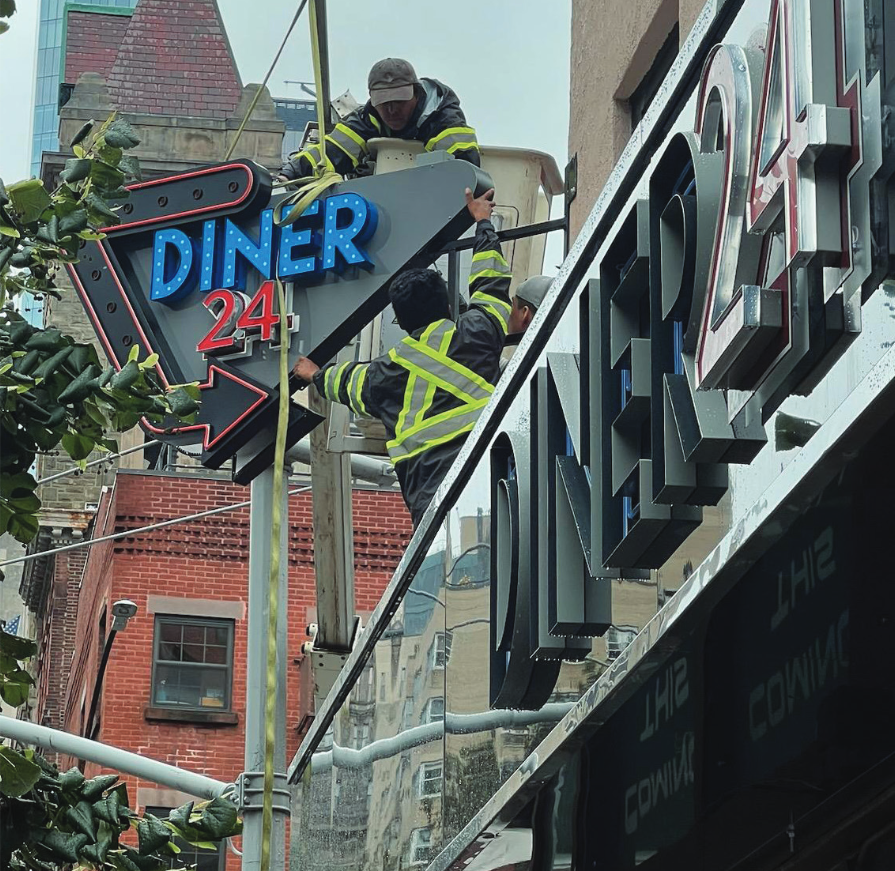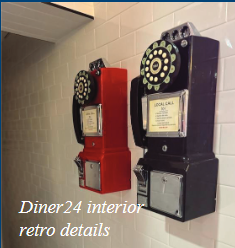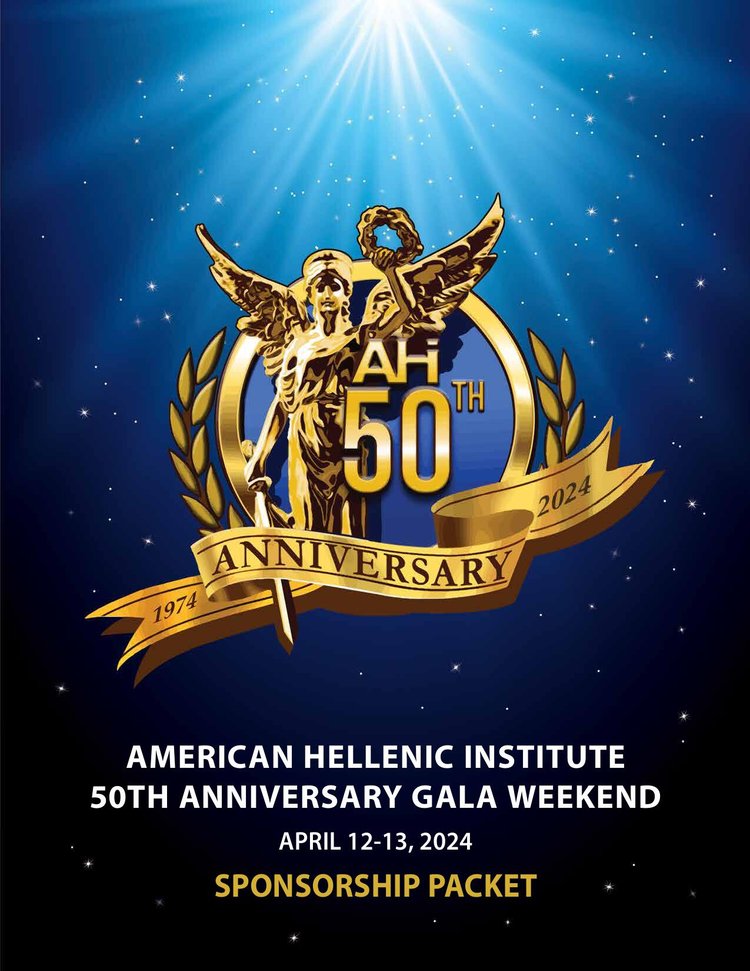Does Around-the-Clock Still Rock?
Posted by estiator at 12 March, at 13 : 36 PM Print

COVER STORY
Betting big on 24-hour dining at a tough time for late-night.
By Michael Kaminer
Stratis Morfogen, the New York author and entrepreneur, has made a career of breaking rules. He even titled his 2022 book “Be a Disruptor: Street-wise Lessons for Entrepreneurs.” But Morfogen’s latest venture might be his most audacious. With Diner24 (diner24nyc.com), a Gramercy Park restaurant set to operate around the clock, 365 days a year, Morfogen is swimming against the tide of shorter hours and more limited service for restaurants.
“All my life, I’ve bucked the trends and been successful in doing it,” he says. Technology and online marketing will change the game for Diner24, he feels. “It’s about disrupting. This is actually a great opportunity. For my dad’s generation, technology was my mother on a Casio register at the Hilltop Diner. It worked for them, and that’s great. But that generation never really shifted.”
In June, The New York Post reported that “Manhattan’s once thriving 24/7 eateries—where revelers spilling out of thumping clubs and after-hours hotspots would merge with an early-morning work crowd—are dwindling as staff shortages, rising real-estate prices, and soaring crime eat away at all-night options.” But by studying search-engine optimization data, Morfogen had an epiphany. “There is so much data suggesting that 600,000 to 700,000 people every month are searching for terms like ’24-hour diner,’ ‘late-night snack,’ ‘breakfast 24,’ or ‘food 10pm to 6am,’” he says. “I’ve been very in tune with SEO marketing since I brought [New York’s iconic] Fulton Fish Market online in 1997.”

Morfogen says he’s also filling a gap left by diner owners and operators whose offspring have decided that a restaurant’s real estate is more valuable than the businesses operating on it. “The next generation doesn’t want anything to do with the restaurant business because the real estate is so valuable, so they’re either selling it or holding it,” he says. “They’d rather be landlords.”
The 24/7 model “obviously retrenched during the pandemic and into the better part of 2022, as historic labor shortages hindered the entire industry,” Alicia Kelso, executive editor of Nation’s Restaurant News (nrn.com), tells Estiator. Kelso notes that according to restaurant research firm Datassential, eateries cut back weekly operating hours by 7.5 percent in 2022, or about 6.5 hours, compared to 2019 because of these labor shortages. “The overall 24-hour model declined during that time, too,” Kelso says. In 2022, there were 21,345 places open for 24 hours, versus 25,449 in 2020, data indicates—a decline of more than 20 percent.
In many major markets, diners that had opened non-stop before the pandemic cut back hours. Outside of New York and Los Angeles, whose 24-hour restaurants include local icons Astro Family Restaurant and Norms, chains like Denny’s and IHOP are the sole all-night options. Unlike the rest of the country, New York City still offers a range of 24-hour diner options, including Chelsea’s Malibu Diner and Hollywood Diner, Gramercy Park’s Orion Diner & Grill, the Upper East Side’s Ritz Diner, and the Flame Diner in Hell’s Kitchen.
In New Jersey, the Stateline Diner (statelinediner.com) in Mahwah maintains its around-the-clock schedule, even as many of the state’s famous diners have cut back. “It works for us because we’re close to the New York State border, so we pull from New York as well as New Jersey,” says Themis Nissirios, who owns the diner with his father and his uncle. With only a pause during Covid, Stateline Diner has operated without a break since 1976, Nissirios says.


“Our clientele is a mix,” he tells Estiator. “Until 10 pm, we see everything. After that, we get older regulars who stay up late. And late-night on weekends, we get teenagers and people in their twenties.” Operating nonstop comes with significant challenges. First, lifestyles have changed, he says. “Diners used to be part of the night out. People would go to the bar, then go out with a group of friends to a diner for a burger or an omelette,” Nissirios says. “People got more and more worried about DUIs, and rightly so. That’s where it started, and Covid exacerbated it. Going somewhere after a night out wasn’t part of the night anymore.”
Staffing is another hurdle, he noted. “For a long time, we couldn’t find people to work, period,” he says. “Now that there’s a bit of an economic slowdown, layoffs, and a lack of jobs, we’re getting more people who are looking for work.”
A less obvious issue with around-the-clock service is insurance, Nissirios explains. “You don’t see this unless you’re actually open 24 hours a day, but our insurance costs are through the roof,” he says. “I was told by our current agent that our liability insurance would be cut in half if we didn’t operate 24 hours a day, from $48,000 to $24,000 annually. And fewer carriers are willing to insure 24-hour businesses to begin with.”

Similar issues have kept other operators from embracing a 24-hour model. Stathis Antonakopoulos had initially planned for his newest Carnegie Diner & Café (carnegiediner.com), in Midtown Manhattan, to stay open around the clock. “But it’s not really affordable to do that anymore,” he tells Estiator. “The cost of employees and the cost of operating overnight don’t justify the prices you need on the menu to be able to hold it.”
Staffing issues also discouraged him from going all-night. “You can’t find people willing to work the graveyard shift anymore. I did it as a student at Baruch College, working from 6 pm to 6 am. It’s the hardest shift you can work. Unfortunately, the younger generation is not willing to sacrifice their sleep.” His new, 5,500-square-foot Carnegie Diner & Café location at Eighth Avenue and 50th Street is staying open until 2 am on Fridays and Saturdays, “and it’s really hard to get people for that shift.”
The overall trend in New York, Antonakopoulos says, “is that younger people no longer party until 5 am or 6 am. There are fewer big nightclubs. The pandemic was the tipping point for all of this. People reevaluated their lives and choices. Partying until 5 am when you have to work the next day didn’t feel like a good choice anymore.”
With Diner24, Morfogen is shrugging off those concerns. First, “I have a file with nearly 90 names for 35 open positions,” he says. “There was no formal recruiting. We just put something up on Instagram, and our résumés just blew up.” For both staff and a constant customer base, Morfogen pointed to nearby colleges like Baruch and NYU, hospitals, “an abundance of nightlife” on Third Avenue, and “the density of Manhattan.”
Morfogen also says he was able to secure a 20-year lease on his space, a prime Third Avenue corner that had been occupied by local favorite Lyric Diner for 35 years. “It’s below-market rent,” he says. “The kitchen was already there. We did a remodel of the room. The owner convinced me to take it because his son didn’t want it.”

With a color palette of dark blues with red accents, the look of Diner24 is “inspired by an old diner, combined with country chic,” Morfogen says. “We have an open kitchen, vinyl booths that all have jukeboxes, and a 10-cent pay telephone by the bathroom. We also have multimedia walls where people can shoot videos and post them on social. We’re adding 21st-century technology to a 19th-century concept.” The restaurant will feature 110 seats inside and 65 outdoors.
Likewise, the menu will add a modern twist to traditional diner fare. “We’re using the farmer’s market at Union Square for some provisions,” Morfogen says. “My chef, Pavlos Devaris, who is Greek, will have some Greek menu items with a French influence. But it’s not too fancy. This is a working-man’s menu. I just want to deliver the best ingredients, with hand-crafted sandwiches, wonderful vegetarian spreads, and an incredible gyro carved at the table.” Specialty cocktails will include the Gramercy Sunrise, with Mi Campo tequila, blood-orange juice, and lime, and the Parkside Punch, with Bacardi Spice, pineapple juice, coconut cream, and ginger.
Customers will also get complimentary, triple-filtered sparkling or still water. “I want everyone to feel like they’re coming into a home kitchen,” he says. The diner will also sell branded merchandise with the Diner24 logo, including aprons, shirts, hats, mugs, and an egg cream glass.
Signs of hope are appearing in the late-night business—at least for chains, says Kelso of Nation’s Restaurant News. According to a story she reported in August, several chains have noted the recovery of their late-night business, and data shows a 7.5 percent increase in traffic during the day. In August 2023, Denny’s reported that 75 percent of its restaurants are now operating 24 hours, Kelso says. IHOP is also increasing its operating hours again. Last quarter, 4 percent of its restaurants added overnight hours and most restaurants now operate either 24/7 or 24/2, she notes.

For his part, Morfogen is bullish on the concept and its future. He’s set to open Diner24 this month; only long-delayed nods from New York City’s Fire Department and Department of Buildings have held up the restaurant’s debut. “I grew up in this business,” says Morfogen, whose father, a native of Anavrati, Sparta, had New York seafood restaurants; they worked together when his father bought the 24-hour Hilltop diner in Queens in 1988. Morfogen’s mother’s family came to the U.S. from Gythio, Sparta, 10 years later. “I’m very excited—I believe the 24-hour diner is one of the greatest culinary creations ever in the history of hospitality. I don’t believe it should go away. It just has to be repurposed. What makes it so great is affordable comfort that’s available on the consumer’s time, not ours. The first time we open, we’re going to take the keys and throw them away.”
















